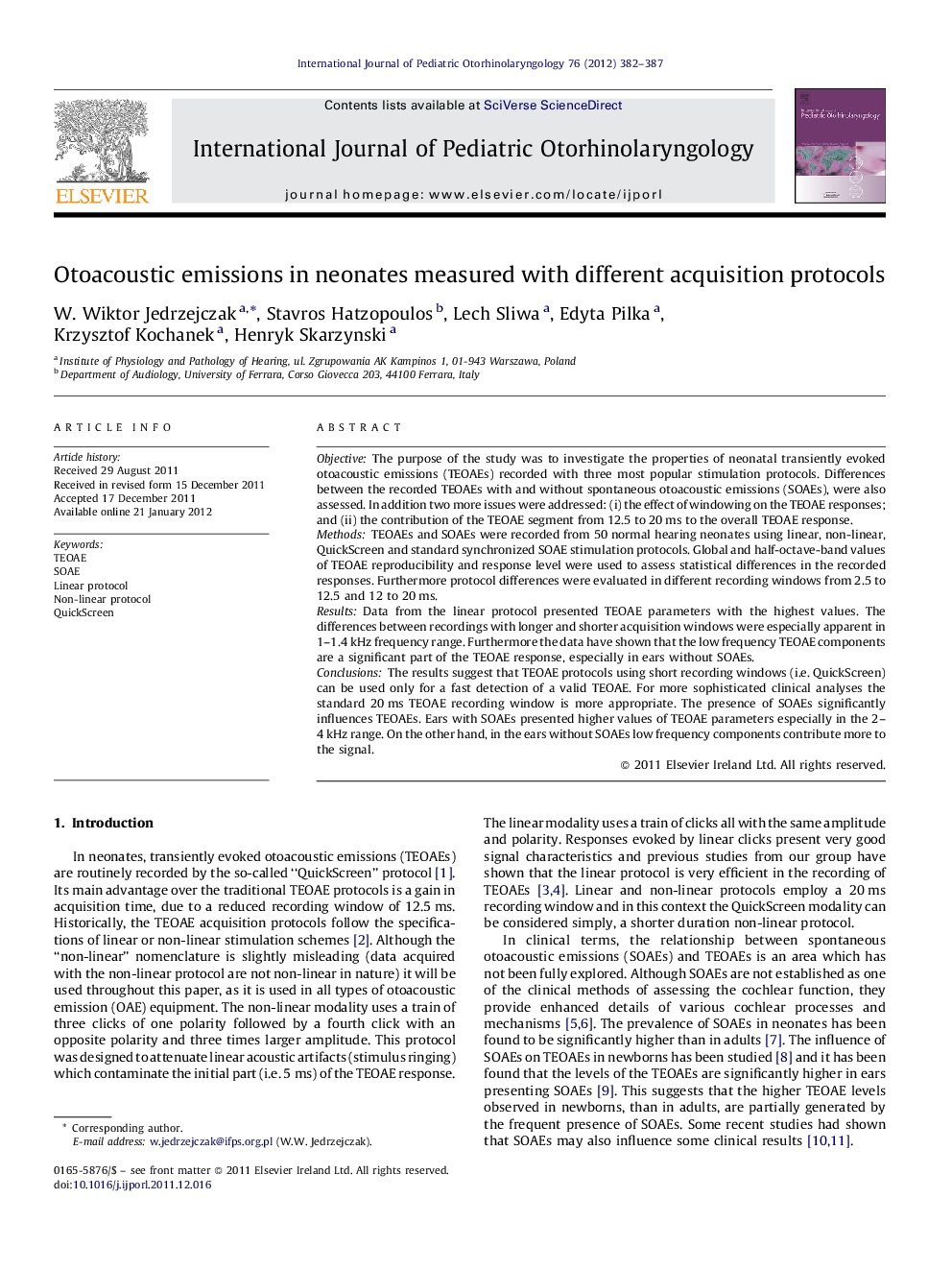| کد مقاله | کد نشریه | سال انتشار | مقاله انگلیسی | نسخه تمام متن |
|---|---|---|---|---|
| 4113154 | 1606034 | 2012 | 6 صفحه PDF | دانلود رایگان |

ObjectiveThe purpose of the study was to investigate the properties of neonatal transiently evoked otoacoustic emissions (TEOAEs) recorded with three most popular stimulation protocols. Differences between the recorded TEOAEs with and without spontaneous otoacoustic emissions (SOAEs), were also assessed. In addition two more issues were addressed: (i) the effect of windowing on the TEOAE responses; and (ii) the contribution of the TEOAE segment from 12.5 to 20 ms to the overall TEOAE response.MethodsTEOAEs and SOAEs were recorded from 50 normal hearing neonates using linear, non-linear, QuickScreen and standard synchronized SOAE stimulation protocols. Global and half-octave-band values of TEOAE reproducibility and response level were used to assess statistical differences in the recorded responses. Furthermore protocol differences were evaluated in different recording windows from 2.5 to 12.5 and 12 to 20 ms.ResultsData from the linear protocol presented TEOAE parameters with the highest values. The differences between recordings with longer and shorter acquisition windows were especially apparent in 1–1.4 kHz frequency range. Furthermore the data have shown that the low frequency TEOAE components are a significant part of the TEOAE response, especially in ears without SOAEs.ConclusionsThe results suggest that TEOAE protocols using short recording windows (i.e. QuickScreen) can be used only for a fast detection of a valid TEOAE. For more sophisticated clinical analyses the standard 20 ms TEOAE recording window is more appropriate. The presence of SOAEs significantly influences TEOAEs. Ears with SOAEs presented higher values of TEOAE parameters especially in the 2–4 kHz range. On the other hand, in the ears without SOAEs low frequency components contribute more to the signal.
Journal: International Journal of Pediatric Otorhinolaryngology - Volume 76, Issue 3, March 2012, Pages 382–387